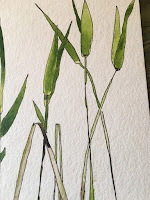 |
Dhaba:
The Wonderhouse |
"Secretly homesick, I would stop in India-owned newsstands on the way back from class, lingering over the magazines and quietly listening to the owners speaking in Gujarati, just for comfort." – Meera Sodha, from
Made in India
ch.5
With Sanja, or "Little Chaat," like all others from around the world, the making of the young chef had very little to do with choice or the thinking that this fine craft was a privilege; but more a habit of duty, often nurtured by the role of a mentor. It had become a mere fact at The Wonderhouse that
Sanja was now in charge of all of the chicken meals, from the purchasing, to the storing, preparing, and finally -- his favorite part -- the preparation, which, when all of the preceding steps had been perfected he realized still, after hundreds of meals, that this particular plate was to be the very one to base his, and others', opinion on. The very moment, he found out quickly in his duties, that the chef makes a decision to cut corners or to over-do a chicken leg, it would inevitably be that customer who would be most devastated by the poor quality. It had happened to him the day, in fact, that he met

Lily and her grandfather and which led, so ironically, to the eventual founding of the treasure. It was Mum's Chicken Curry, a simple staple of the Dhaba, butter, oil, cumin, ginger, green chilis, and all the rest, that he had realized his chicken legs had not properly defrosted and as they came out of the giant shrink-wrap, were still mildly frozen. To defrost these in a microwave was a disgrace to the animal, so he he quickly poured lukewarm water over this batch in hope of defrosting. He rushed his cumin seeds and cinnamon sticks; the onions never received the time in the pan that they should have received. He remembered that day that he had looked up out of the Dhaba kitchen and could see that

the tide had risen and was now churning across the strait between Captiva and the North Island, and that it looked strangely as if a kayak was standing in the water not moving, a very odd sight indeed, especially against the wind and the drift of the current. "Mother, look out this there, isn't that a kayak floating still?" The mother was at her station rolling for the day's chapatis. She knew that the rhythm had been off with the chicken. "You have more important things to consider right now, don't you?"
"This is nothing. The chicken is just a little cold."
"The cold will effect the tomatoes when you put them in. You know this, yes?" Atman was out front creating the day's sign which they placed at the beginning of the little dirt road which led to the tiki hut and the Dhaba behind. He had been watching the water as well, as all do there at the Sunset. "Sanja, why don't you go see what is happening out there at the end of the beach, I will take your chicken. I don't imagine you want to be blamed for this plate anyway, am I right?" Sanja was now at the age where all of this fuss over one single plate of chicken had only partially dawned on him as being this urgent. He took considerable natural pride in all of his cooking, yes; but to let one plate create such a wake of attention made him sometimes feel like he was living inside a very unusual school of sorts. Sanja wrapped up his apron, quite interested in the scene unraveling at the water. It had been only the week before, directly outside of the main harbor, that an old time sailor had capsized his 40 footer and the metal mast still poked twenty feet out of water at a forty-five degree angle. The captain had claimed that it was a manatee at leeward that forced a bad turn and then to a sinking process that was witnessed by a hundred tourists as they sat in their beach chairs sipping gin and watching the passengers casually jump into six feet of water. "Tell me your plans for the chicken Little Chaat."
"Don't call me that, I've outgrown it."
"Not according to the look on your mother's face."
"Where is Cecilla? I notice that she is not getting reprimanded for doing nothing."
"Homework," said the mother, flipping the stack of chapatis, as she looked over her shoulder for the arrival of new customers. "Let's finish the dish, should we?" she said as only a mother can, both kindly and with a strong hint of tenured will that probably should not be wrestled with.
Sanja waded into the cool water with goggles on and swam slowly along the shallows of the beach, watching the cloudy rush of incoming water knock around the layers of white and pink-hued shells.











































